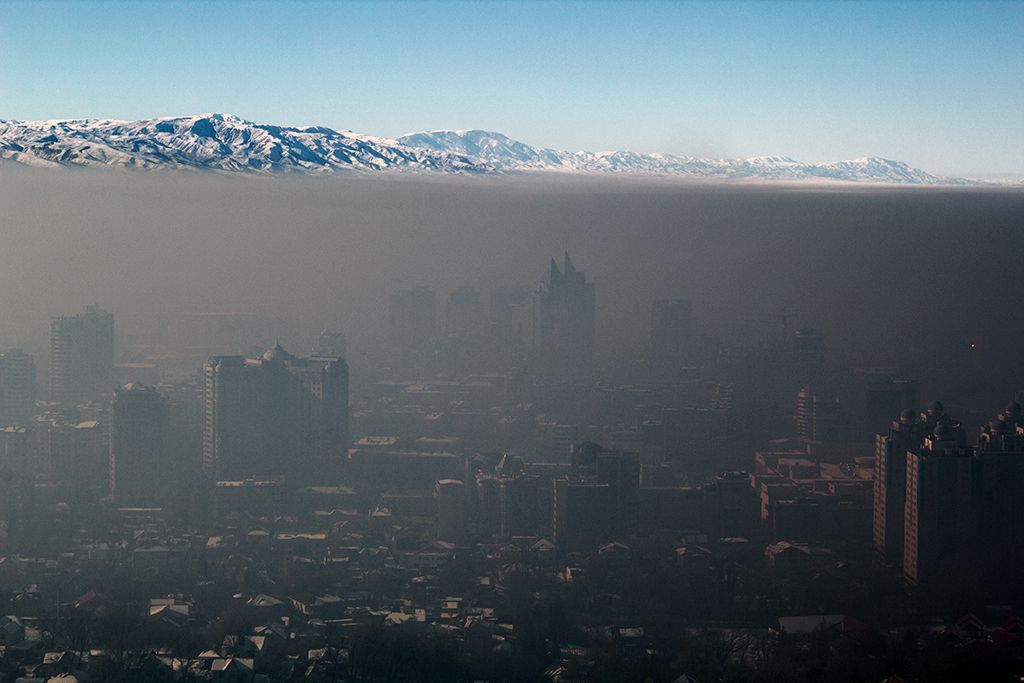
Air pollution in the cold countries of Central Asia is particularly high during winter due to the consumption of solid fuels for space heating. Evidence-based policy recommendations are needed to facilitate the transition from solid fuel consumption to the use of cleaner fuels for residential heating and cooking, particularly in Kazakhstan and the Kyrgyz Republic. This is important not only for improving health conditions for the inhabitants and visitors in these countries but also for reducing the life-threatening health hazards arising from indoor cooking and heating.
Ensuring access to affordable, reliable, sustainable, and modern energy for all by 2030 is Goal 7 of the 17 United Nations Sustainable Development Goals (SDGs). Fuel choices for cooking are not only important for SDG 7.1—“To ensure universal access to affordable, reliable, and modern energy services”—but are also crucial for achieving other goals, such as good health and wellbeing (SDG 3) and climate action (SDG 13). There is strong evidence that the combustion of solid fuels in inefficient stoves leads to the release of suspended particulate matter, carbon monoxide, polycyclic organic matter, and formaldehyde, which have adverse effects on health.
Recognizing the above facts, developing countries are striving to meet their gasification and electrification targets, with commendable results in the past few years. However, effective public policy aiming to increase large-scale access to clean fuels needs to be coupled with an effective transition ensuring their adoption and sustained use. This has been a concern of many middle-income countries, including Kazakhstan and the Kyrgyz Republic, where despite nearly universal electrification, “dirty” solid fuels are still in widespread use, especially in rural areas.
Electricity is considered a cleaner fuel for residential cooking and heating due to lower indoor pollution. However, although there is nearly universal electrification in Kazakhstan and the Kyrgyz Republic, households tend to use multiple fuels for heating and cooking instead of solely relying on electricity because of high electricity prices and issues in the quality of electricity access. Despite Kazakhstan’s reported achievement of SDG 7.1 due to its 100% electrification rate, nearly one-third of households use solid fuels for heating (Bureau of National Statistics, 2018). Thus, universal access to electricity may not be sufficient to address the complex challenges of ensuring its sustained use. The indicator of SDG 7 should incorporate the fuel-stacking behavior of households in terms of the proportion of households relying on clean as well as solid fuels.
Against this backdrop, recent ADBI research (Kapsalyamova et al. 2021; Mishra et al. 2021) using household survey data from Kazakhstan and the Kyrgyz Republic assesses the fuel choice behavior of households for cooking and heating. The following are some of their key findings with policy recommendations.
Stoves
In cold countries, such as Kazakhstan and the Kyrgyz Republic, the heating system installed at the premises of a household can determine the choice of cooking fuel. This is because the same stove can be used for cooking and heating in the wintertime. For example, the top surface of a coal-based stove (Photo 1) can be used for cooking food and heating water for household needs. This suggests that the transition to clean fuels for cooking should unambiguously consider households’ transition to cleaner heating systems.
Photo 1: Coal-based cooking-heating stove in rural Kyrgyz Republic

Photo courtesy of Kamalbek Karymshakov
Buildings
Households living in newer dwellings consume more coal for heating (Kapsalyamova et al. 2021; Mishra et al. 2021). This is not necessarily due to a lack of energy efficiency improvement incentives but can also be due to higher-income households living in newer buildings. Nevertheless, currently, there is a lack of specific government policies and regulations to incentivize energy efficiency in detached and individual houses. This calls for more focused research on the energy efficiency of residential buildings in Central Asia.
Access
Households with access to natural gas and liquefied petroleum gas (LPG) are less likely to use solid fuels. Hence, policies that promote natural gas and LPG infrastructure development will likely reduce the consumption of solid fuels. The development of infrastructure for gas pipeline expansion in remote rural areas and the increased affordability of cleaner types of fuel, as measured by access to natural gas or LPG in the sample countries, are necessary factors for the transition to clean energy, among others.
Quality
The findings indicate that the quality of electricity is important for the choice of cooking fuel by households in the Kyrgyz Republic. Households with more frequent power supply disruptions are more likely to use coal and wood.
Price
A higher electricity price, which includes the full economic cost and excludes subsidies, is usually recommended in the literature as a measure to promote renewable energy and energy efficiency. However, in Kazakhstan and the Kyrgyz Republic, a higher electricity price could lead to greater solid fuel consumption, and, thus, greater indoor pollution.
The following policies could help promote the transition to cleaner fuels for residential cooking and heating based on the findings by Kapsalyamova et al. (2021) and Mishra et al. (2021).
- Gas access: The development of infrastructure in terms of gas pipeline expansion in remote rural areas and increased affordability of cleaner types of fuel, as measured by access to natural gas or LPG in the sample countries, are important factors for the transition to clean energy, among others.
- Education: As a part of promoting access to clean fuels, policies should include aspects that work to increase the awareness of households on the impacts of solid fuel consumption on health and the environment. The findings show that better-educated household heads are less likely to use solid fuels.
- Energy efficiency: Continue to promote the adoption of energy efficiency technologies for residential buildings, such as heat meters. The standardized, uniform, and credible certification of energy performance and rating systems for buildings could make energy efficiency improvements in buildings more visible and, thus, more attractive for
_____
References:
Bureau of National Statistics, Agency for Strategic Planning and Reforms, Kazakhstan. 2018. Fuel and Energy Consumption by Households in the Republic of Kazakhstan [1].
Kapsalyamova, Z., R. Mishra, A. Kerimray, K.Karymshakov, D. Azhgaliyeva 2021. Why Energy Access Is Not Enough for Choosing Clean Cooking Fuels? Evidence from the Multinomial Logit Model [2]. Journal of Environmental Management 290, 2021.
Mishra, R., D. Azhgaliyeva, Z. Kapsalyamova, A. Kerimray, and K. Karymshakov. 2021. What Determines Coal Consumption for Heating Residential Space in Central Asia? [3] ADBI Working Paper 1262. Tokyo: ADBI.
Photo: By Igors Jefimovs [4] (Own work) (“Smog over Almaty city, Kazakhstan [5]“). Licensed under Creative Commons [6] Attribution 3.0 Unported [7] via Wikimedia Commons.